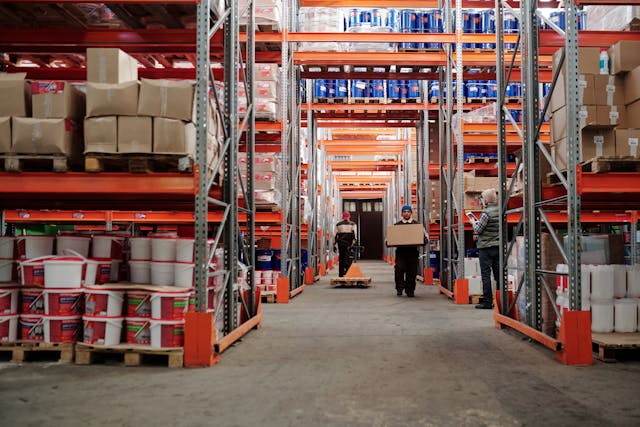Warehousing and distribution have a critical role in supply chain management. They encompass various services like storage, packaging, stock control, transportation, inventory management, etc. their main aim is to product delivery optimization and minimizing operational costs.
As technology advances, warehousing and distribution are experiencing remarkable changes. These changes have been driven by key factors like technological advancement, market changes, ecommerce expansion, etc. therefore, businesses must embrace new trends reshaping this sector today. The following are trends in logistics and distribution transforming the warehousing sector.
1. Automation and Robotics
Automation takes the first position in the list of top trends in logistics and distribution. Today, companies like The Advanced Group are enjoying business, thanks to automated systems. Warehouses are equipped with robots and smart conveyor systems. Technologies are ensuring accuracy while speeding up order fulfillment. The automated systems are also reducing labor cost, making automation a game-changer in business.
Robotic systems are powered by machine learning to accurately reduce human intervention. For instance, robotic piece picking arms are accurately picking and placing products. This has helped businesses reduce errors, reallocate human resources and boost productivity.
2. Stock Merging
2025 is set for businesses to store their products in one stock. Today and in the past, businesses have been keeping stock in different warehouses. However, stock merging is set to change this. Now, businesses will be able to merge their stocks. Brands can handle orders and returns at the same point. The trend is giving business flexibility and helping in managing the extra stock stored. It is reducing extra production of products, thus impacting the environment positively.
3. Sustainability Initiatives
Today, the world is moving towards environmental conservation. In that case, green warehousing has become a major focus. Warehouses are looking for sustainable ways to do business. For instance, sustainable packaging, energy-efficient lighting and renewable energy sources are on the rise. This sustainability has helps warehouses reduce carbon footprint and maintain cost-effectiveness.
4. IoT Integration
Integrating with IoT has enhance connectivity in warehousing. Smart devices and sensors have improved security and are providing real-time data. Today, warehouses can get data on temperature, inventory level or track shipment in real time. This kind of integration has smoothened operations in the supply chain.
5. Advanced Security
Security is apriority in the warehouse system. All foods must be properly stored, packed and distributed accordingly. From biometric access control to surveillance systems driven by AI, this sector is receiving massive changes. It is applying robust security measures to guard inventory and maintain industry standards.
6. Data-Driven Decision Making
Warehousing is utilizing big data and AI to make decisions. With help of IoT and AI, businesses can predict demand and optimize inventory. Additionally, big data is also helping them perform real-time analysis. This has greatly helped mitigate supply chain disruptions and delays in transportation.
In addition to managing the supply chain, data driven software is also enabling predictive maintenance. The maintenance is helping minimize equipment downtime and enhance operational efficiency. Realtime data has enabled proactive decision-making and problem-solving.
Key Takeaways
The future of warehousing in being molded by technological advances and changing consumer needs. With these trends, businesses can reduce operational cost and environmental impact. The trends are also helping businesses gain a competitive edge in the changing world of logistics.
For more interesting posts visit my blog.

